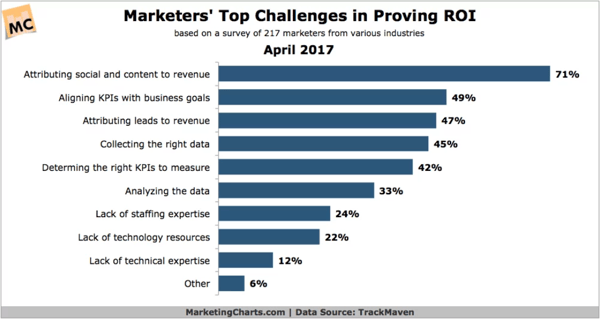How to Measure Marketing ROI
The first step to creating effective marketing is to identify what your objectives are. It may seem simple, but as the world becomes more digitally...

Many reoccurring themes emerge in meetings with new clients and prospects, but one of the most frequent is that of marketing ROI or, more specifically, “how will we know if our marketing is successful?” In the age of data, where everything a consumer does is measured and tracked, it’s often easy to overlook what we’re supposed to be doing with the data we work so hard to collect.

Specifically, when it comes to social media marketing ROI, even though social channels have continued to grow as a part of our overall marketing mix during the past ten years, many marketers still do not have a firm grasp on what their social strategy is or what metrics should guide it.
In the 2016 Social Media Marketing Industry Report, one of the top five questions, gathered from their survey of over 5,000 marketers was, "How do I measure the return on my social media marketing?" Given how often marketing ROI comes up in conversation, it isn’t surprising that 86% of those surveyed had this question in the front of their mind.
Many brands tend to focus on "vanity metrics" vs. numbers that will actually move their business forward. Vanity metrics are numbers that don't paint a clear picture of what is actually happening, and in some cases may even be manipulated in order to make something appear more successful than it is. These are numbers like page views, impressions, and downloads. It's not that these metrics don't matter, it's just that they tend not to matter as much.
The good news is that the answer to “is it working?” is a lot easier to find than you might think. In fact, the effectiveness of all your marketing channels, and your marketing ROI should be measured by the single most important metric every business shares: revenue.
With so many different channels and marketing metrics available, it's easy to forget that everything within your marketing arsenal has to support driving revenue for your business. Once you can isolate, test, and track which elements of your marketing help drive revenue, it's just a matter of supporting those metrics with effort and budget. Here are a few areas to focus on as you look for correlations.
Focusing on revenue, and which aspects of your marketing are proving to drive your business, might not be as exciting as discussing millions of impressions or social chatter. However, once you understand what measurements are critical, your marketing becomes stronger and more successful than ever.
Sign up for our monthly newsletter to receive updates.

The first step to creating effective marketing is to identify what your objectives are. It may seem simple, but as the world becomes more digitally...

The word brand is often misused in marketing. The confusion is likely tied to the fact that most “brands” didn’t start out thinking of themselves as...

The CUNA (now America's Credit Unions) Diamond Awards are over, and as a judge, it was fun to see all of the marketing work and results from Credit...